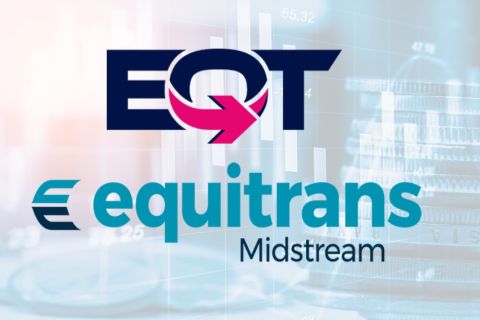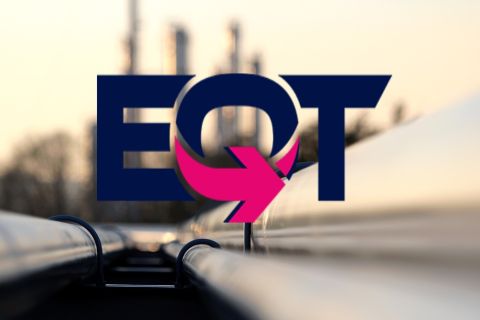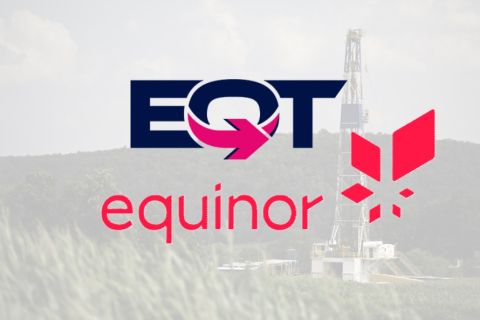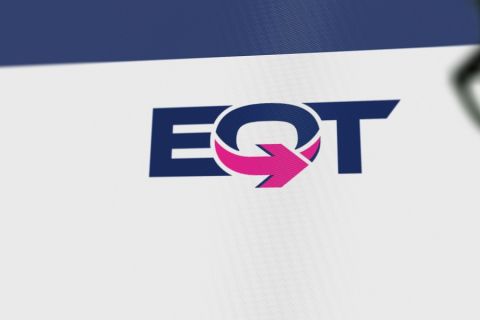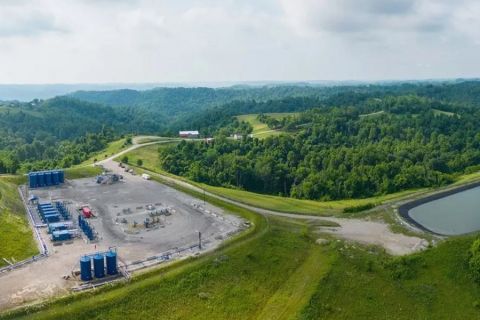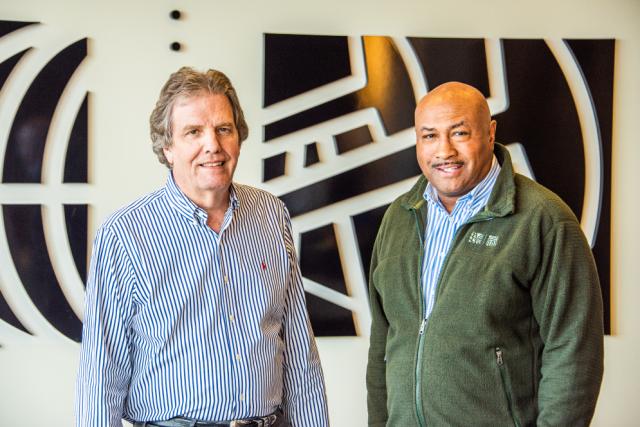
Fifteen years ago Lime Rock Resources LP co-CEOs Eric Mullins (right) and Charlie Adcock (left) built the direct investment fund on an acquire-and-exploit strategy, which still works today. “A lot of folks ask what’s the inherent value of [an] asset,” said Mullins, “but that’s not the question we’re asking. The question we’re asking is ‘What price can we pay for this asset and make money for our investors?’ It’s a very different question if you think about it.” (Source: Steve Toon/Hart Energy)
[Editor's note: A version of this story appears in the January 2020 edition of Oil and Gas Investor. Subscribe to the magazine here.]
It’s been a good ride, the fast and furious ramp up and build-out of the shale plays, fueled by a slug of capital looking for quick returns. But it’s the patient money that once ruled oil and gas investments, and is coming to the fore once again as investors call for capital discipline.
One company in particular never wavered on that model.
Lime Rock Resources LP, a Houston-based private-equity firm that directly buys and operates its own assets, was formed 15 years ago on an acquire-and-exploit strategy with intent to generate investor returns through distributions and long-term gains. That was the polar opposite of the find-and-flip model other private equity pursued during the nadir of shale, and which is essentially defunct today.
Founded in 2005, the Houston E&P firm has raised some $2.4 billion over the course of its tenure, with a directive to target low-risk, mature and high proved developed producing (PDP) reserves. It is currently investing its fourth fund, a $754 million fund raised in 2016.
Lime Rock Resources is led by co-CEOs and managing directors Eric Mullins and Charlie Adcock. Mullins joined Lime Rock from the financial side of the industry, having spent 15 years in the investment banking division of Goldman Sachs before launching the investment E&P vehicle. Adcock’s background is rooted in the operational side, with 12 years at The Houston Exploration Co. and before that with other E&Ps prior to joining Lime Rock Resources.
Three of the funds still hold active investments spread across the Williston, Permian, Anadarko and Appalachia basins. Current estimated reserves within the various funds total 328 million barrels of oil equivalent (MMboe), about 70% PDP, with daily production of approximately 57,000 boe/d.
Since the beginning of 2018, Lime Rock Resources has completed five acquisitions in a tepid A&D market. These include a $230 million deal for ConocoPhillips Co.’s Barnett Shale assets, Oklahoma Swoop producing properties from major BP Plc and a $300 million purchase of overriding royalty interests (ORRI) in the Marcellus Shale from Range Resources Inc., a co-investment with San Jacinto Minerals II.
“A lot of folks ask what’s the inherent value of this asset,” Mullins said, regarding Lime Rock Resources’ acquisition strategy, “but that’s not the question we’re asking. The question we’re asking is what price can we pay for this asset and make money for our investors. It’s a very different question if you think about it.”
Oil and Gas Investor visited with Mullins and Adcock in their Houston office in December.
Investor: The marketplace today is a bit volatile. A lot of E&Ps are struggling, looking for a new strategy. In today’s environment, what would you say differentiates Lime Rock Resources?
Mullins: One thing is we have committed capital, which gives potential sellers the certainty that we can close. Typically, when we make offers, they are not subject to financing, so that gives sellers confidence that we can follow through.
Adcock: That’s a very crucial point nowadays because when you talk to A&D advisers, I think they would unanimously tell you their biggest problem is finding people that really have money, and it’s not something they have to go and get after they make you an offer. And so I think we have a very good reputation in the business for being able to close deals and follow through.
Investor: How is Lime Rock Resources funded?
Mullins: Most of our investors are institutions. They’re pension funds, college endowments, foundations and a few high net worth individuals. So we go and market and raise our funds directly with investors.
Investor: Have limited partners become more skittish about investing in recent times? Are you finding that it’s harder to raise money now?
Mullins: No doubt it’s more difficult today. Some investors haven’t done well in the past five years in energy, public and private, and that’s part of the issue. Some investors just don’t want to invest in energy because of the fossil fuel pushback. They’re skittish, and so it is harder to raise money today.
Adcock: One thing we hear over and over from people that have invested in this space continuously over the past 10 years is it’s not that they want to leave energy, but they haven’t gotten any realizations back. Most of these institutions do everything on an allocation model, and so they have a certain amount of their endowment dedicated to energy. And because they haven’t gotten any realizations back, they’re stuck. But some have just made the decision to move out of energy.
Mullins: But there are others that view this current environment as a really good opportunity. Our markets are very cyclical, and a lot of times properties just don’t trade when things get soft. But one thing I think is unique about today’s environment is that we’re still seeing transactions happen. It’s somewhat of a soft market, but deals are getting done and that’s what makes it unusual.
Investor: In lieu of the current challenged marketplace, have you found a need to change or adapt your business model in any way as have some private equity backed E&Ps? Or does your model work throughout all types of markets?
Mullins: I’d say it’s closer to the latter. We’re pretty consistent. We’re acquire and exploit, we pursue both hydrocarbons. They’re different, but we are open to buying either one. It’s the exact same strategy. We really haven’t changed.
Investor: Originally when you formed, why did you choose to focus your business model on more mature assets?
Adcock: We felt that there was opportunity in that space that suited a different risk profile than the typical E&P private-equity play in upstream E&P. The reason it’s lower risk is when you start buying properties and they contain more than 50% PDP reserves, you can touch it, you can feel it. You have the advantage of seeing the history not only of the production but also the cost side. So your outcome becomes a little more predictable.
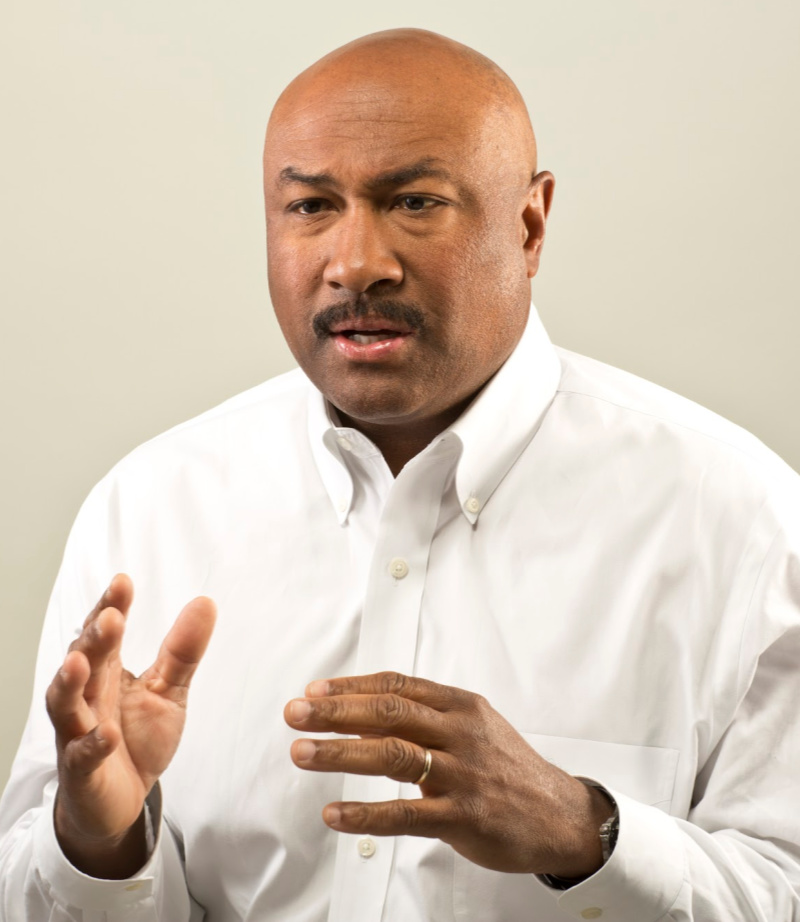
months, we’ve
completed five
transactions,
and the 13
months
prior to that
we didn’t
complete any.
It has been
very active in
the last year
and a half
or so.”
—Eric Mullins
We do drill quite a bit, but the areas we drill in, we try to focus in places where there’s been enough drilling done that the results are predictable. We’re not the type of company that’s going to go in and buy 100,000 acres in a new area and start testing the premise, tweaking the completions to find the best model. It is much riskier, but it also has a lot more upside. We’re more middle of the fairway.
Investor: Do you think this is a model that others wish they were in right now or that you see them returning to?
Mullins: It’s very difficult today to execute on a lease and flip model. The larger public companies are not really hungry for inventory today. If anything, they’re scaling back the way the public markets want them to live within cash flow and to have lower debt. So that is a tougher model, and I think in general companies have to hang onto those properties longer, develop them more.
We’re definitely seeing that. Some groups have moved closer toward acquire and exploit and others are just holding on to the earlier-stage properties longer and developing those more.
Investor: What is your acquisition strategy?
Mullins: The strategy is to find properties that have a significant portion of PDP that we operate to get returns in two ways. One is we try to lower cost, and we’re pretty good about lowering costs. The other is drilling new wells that are accretive to the acquisition.
Adcock: Keep in mind, most of the properties, by the time we’re ready to buy them, the previous owner has moved on to bigger things and so they need a little TLC. A lot of times we’re able to go in and do a lot of simple maintenance work and get production up without spending a whole lot of money.
Investor: What does the deal market look like today? Are you able to find quality properties to bid on?
Mullins: We are finding deals to look at, and we’ve been very active. In the past 16 months, we’ve completed five transactions, and the 13 months prior to that we didn’t complete any. It has been very active in the last year and a half or so.
Investor: What would you say are the seller motivations?
Mullins: A lot of companies are trying to pay their debt down. They’re trying to live within cash flow and as a result they’re paring off some properties that are not going to get their focus so they can take that capital and pay down debt.
Also, there’s a decent amount of inventory in more traditional private-equity energy firms that have E&P portfolio companies that they would like to sell, but for whatever reason they haven’t been able to sell yet. That’s another source of potential opportunities. So of those five transactions, two of them were bought from traditional energy private-equity firms.
Adcock: Traditionally, those groups get a big acreage position, drill as few wells as possible and flip it. But that’s off the table right now.
The horizontal San Andres play we have was from a private-equity backed-portfolio company. They were moving forward when ’14 hit and the prices fell and they couldn’t flip. They had to continue drilling because of lease obligations, so by the time we looked at it, it was right at 50% PDP. They had already drilled enough to give us comfort with the additional drilling. It worked for both groups. We’re actually seeing more of that.
Investor: Are these distressed sales?
Adcock: I wouldn’t call it distressed. I just think they’re motivated for a lot of reasons. All these private-equity funds, they have a certain life. Management teams, in a lot of cases, they want to move on.
Mullins: The second transaction we bought from a private-equity-backed company was at the end of their term life. They just needed to wrap everything up, and that’s why they were sold.
Investor: Are the overrides becoming a bigger part of your acquisition strategy?
Adcock: It’s a sign of the times. A lot of these companies either need more money to drill or they need to pay down debt, and they don’t really want to sell part of their crown jewel because they’re not going to get a good metric on it right now. So you sell this little sliver off the top, and still retain control of your entire acreage base.
In the case of the override we did with the private group, they had a deal in hand from a major and were looking to fund that deal. They did it through this override structure rather than taking down additional debt. That truly was a win-win deal there.
We like them. You buy it and then you have no more capital commitment. But the problem is we think that’s just the short term. When and if this turns around, people will quit doing it. They’re doing it now because it fits. We’re certainly going to look at all of them we can.
Mullins: It’s representative of the equity markets being closed to oil and gas companies right now. I don’t think that’s always going to be the case—there’ll be cheaper ways to finance your business as we move through these cycles. And as that happens, I think there’ll be fewer opportunities for overrides. But for the time being, for us it’s an attractive way to invest dollars.
We look at them as a portion of each one of our portfolios that’s nonoperated. We want the majority of our portfolio to be operated, but we will look at nonoperated opportunities as well. This falls in that category.
Investor: Do you find the A&D space is becoming more competitive?
Adcock: It’s always competitive. I think the one difference right now is it’s a lot more rational.
We’ve had periods as long as 18 months when we didn’t buy anything. One of those periods was when the MLPs were going crazy. That was an irrational market because what they were paying for assets was too much. One thing about this market is I think you’re going to see the valuations tighten quite a bit.
Investor: How has the market affected the deal metrics?
Mullins: Deal metrics have come down. Pre 2014, oil properties were trading around $100,000 per flowing barrel. Today, those properties are trading around $40,000 to $50,000 per flowing barrel, so half of that metric. Deal metrics have been cut in half if not more.
Investor: Do you see this as an opportunistic market, or are you concerned about catching the falling knife at this point?
Mullins: No, it’s attractive. It’s attractive partly because there are just fewer buyers. The point Charlie made earlier is that the E&P MLPs are out of the market now. The public companies are more focused on living within cash flow and reducing their debt, so they’re not competing as aggressively as they have historically with a few exceptions. And a lot of the private-equity energy-focused firms have this inventory of E&P companies that they haven’t been able to sell, and so they’re not aggressively letting their portfolio companies go out and buy either. So there are just fewer buyers in this market, which is partly what makes it attractive if you’re a buyer today.
Investor: How much of a typical acquisition do you fund with bank debt, and can you still access commercial bank debt these days?
Mullins: We target about 50:50, so 50% of the acquisition we fund with bank debt. Some transactions, if you have a little bit more drilling, maybe a little bit less than that, but I would say for the portfolio in general, it’s about 50:50. Every one of those five transactions that we completed in the past 16 months, we used bank debt. The banks are still lending.
There have been some high profile collapses of energy companies recently, and the banks have lost some money, so in general, it’s tighter today than pre-2014, but they’re still open. It’s still an important part of our strategy.
Investor: Do you think with the absence of capital, particularly in the public markets, that more assets will fall into private hands?
Adcock: Yes. Our BP deal is a perfect example. Given the big picture for BP and where they’re focused in buying BHP (Billiton’s $10.5 billion unconventional asset portfolio), this was a little carve out for them. And even though it turns good cash flow and it has good metrics, that takes time. So if you pull human assets away to work on that, they could be working on something that has an EUR magnitude 10 times greater. I definitely think this is going to create more opportunities.
Everybody has to be very cognizant of their human resources right now and working on meaningful projects for their structure. I think we’ll see more of that.
Investor: Like with other private-equity-backed companies, are you facing challenges with exits presently?
Adcock: It’s a tough sell market right now. We do have a little more luxury because our fund life is longer than the typical private-equity model.
Mullins: Terminal value is very relevant today because the exit markets are so difficult. We push our terminal value out 10 years, so you’re not depending on some rogue sale number to make your numbers work in years five or six. It forces the assets to get our returns based on cash flows that are coming out of those properties as opposed to depending on some important asset sale.
Investor: Is that an advantageous model in today’s marketplace?
Mullins: Sure. It’s worked for us, and we haven’t changed that. We basically have three uses for our cash flow. One would be to reinvest in the properties, whether it’s drilling or building out infrastructure—anything we can do to enhance the property. Two, pay down debt. Three, make distributions.
Investor: How do you choose between those three?
Mullins: Anytime you have attractive opportunities where you can spend your capital and do work that’s accretive to that property, we take the opportunity to try and do that. And typically, a plain vanilla strategy would be something like 50% of your cash flow you reinvest in the property, 25% you pay down debt and 25% you make distributions.
If prices get really weak, you may shift that and you may spend 75% on debt repayment to be defensive and 25% on the other two. And then if prices are really strong, you may flip that again and 75% reinvestment and 25% for the other two. So it’s moving all the time, and you’re always evaluating what’s the optimal way to allocate your capital in terms of that cash flow.
Investor: Do you have a target debt ratio you try to stay within?
Mullins: We try to keep our debt between two and two and a half times debt-to-EBITDA. You always have to keep a reasonable balance sheet just to allow you to get through the lower part of these cycles. That’s the key. We focus on that a lot.
Investor: How big of a deal can you do?
Mullins: The largest transaction we’ve completed was just over $600 million. We could probably do a transaction a little bit bigger than that; it’s hard to say. It just depends on how attractive the opportunity is.
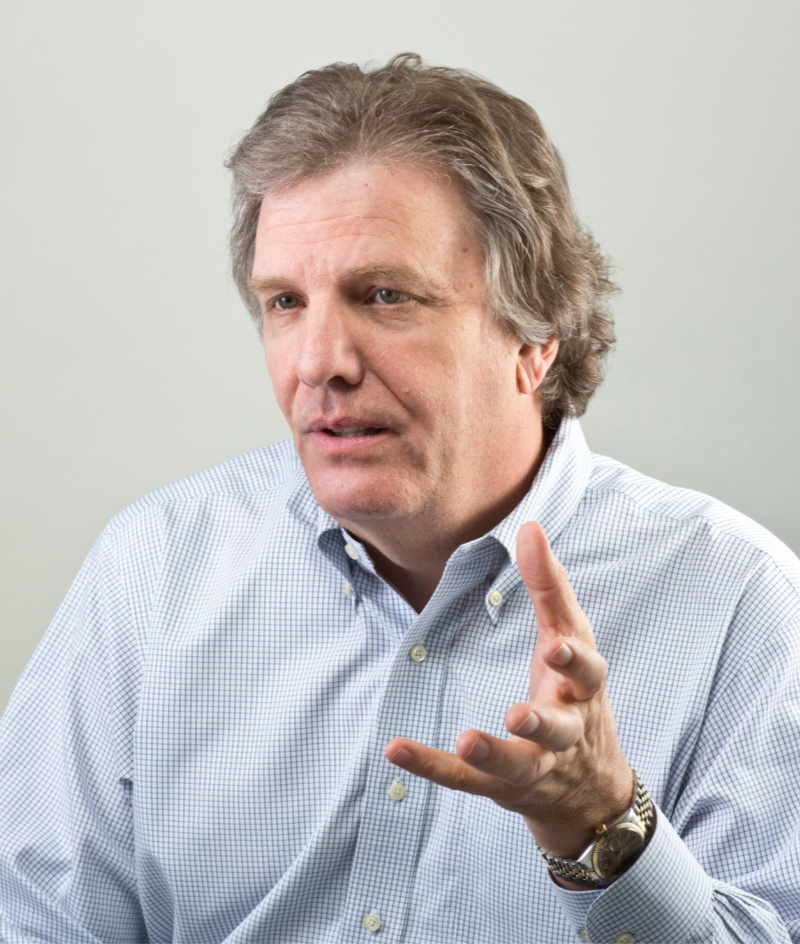
to drill, drill,
drill nonstop
and then at the
end of the day
after you’ve
driven the
truck through
the china shop,
look back and
see what isn’t
broken. We
can’t afford to
do that.”
—Charlie Adcock
Adcock: One of the things that’s changing about private equity is everybody wants to do co-investments now. We hear it more and more from our investors, “We want co-investment opportunities,” because it gives them a bigger bite at the apple. So you reach out to all of the current investors and see who wants to put in additional money. If we had a little bit bigger deal than we wanted to do, we could potentially go to our investors and try to get co-investment to cover the rest of it.
Mullins: To Charlie’s point, if we found something that was a billion dollars and it was really attractive, we could go to our existing investors and probably fill that in, say the difference between $700 million and $1 billion, or whatever it ends up being.
Investor: Hedging is a big part of your strategy. Can you give me some perspective on how you view hedging and why is it a critical part of your strategy?
Mullins: It’s part of our risk management in that we are using some leverage when we buy these properties. So philosophically we think you’re most vulnerable right after you acquire the property. You haven’t started amortizing the debt yet. You haven’t really gotten into your exploitation process. So we will hedge anywhere from say two to six years, and we hedge generally 75% to 85% of our PDP production.
And it’s not because we believe that we know what prices are going to do in the future; precisely the opposite of that. We don’t know what prices are going to do. We do know that at the time of the acquisition where prices are generally, and we know that price range works for that property. So we approach it more like a corporate finance decision, which is to lock in a substantial part of your price exposure, especially in the early part of that acquisition.
And it’s really a win-win. If prices run up a huge amount, yes, you’re going to lose some value on what you have locked in, but your enterprise value is probably tripled or quadrupled because prices have gone up so much. And that swamps the amount you’re going to lose on, say, five years’ worth of hedges.
On the other side, it’s a win if prices go down significantly because it just gives you a bridge to wait for another day when maybe prices can rebound. So it keeps your cash flows up at just the time that you’re most vulnerable if you’re in a low price environment. You’re in a pretty good position if prices go down, you’re in a pretty good position if prices go up.
Investor: What’s your plan going into 2020?
Mullins: We’re active in Andrews County, Texas. We’re going to be active in the Barnett Shale, and in Oklahoma, where we’re going to be drilling on the Swoop property we acquired.
Adcock: Also in the Bakken. One thing we do a little differently is we don’t go into an area and just contract a rig for two years and drill constantly. We tend to take smaller bites of the apple, six- to 12-well packages, and maybe drill 10 wells. And then we release the rig, complete it, see what the results are and get comfortable gauging the completions.
Completion technology has been changing rapidly over the past three or four years at a fierce pace. We want to make sure that we’re completing the wells correctly. When we see that and get really comfortable, then we’ll pick out 10 more locations and get a rig.
Our goal isn’t to drill, drill, drill nonstop and then at the end of the day after you’ve driven the truck through the china shop, look back and see what isn’t broken. We can’t afford to do that because we are time-limited. We have to be very judicious about how we invest our capital because if you go out and just drill willy nilly and it’s not working out, you’re never going to catch up.
Investor: What is your outlook for 2020?
Adcock: The industry’s tough right now, it’s tough. We feel very fortunate because our house is in order, and we’ve got good cash flow from all our properties.
Investor: Any hope?
Adcock: There’s always hope. The capital markets will reopen. People will finally realize the value spread and the capital markets will reopen and once that happens, then it’s going to invigorate the whole industry.
The rig count has fallen pretty dramatically. Everybody knows that in these shale areas, when you start taking rigs off the table, your production starts dropping. When the price dropped in 2014 and then you look at the next nine months of production for the U.S., we lost a half-million barrels a day just in that nine months. So, yes, there’s hope.
Mullins: I’m very excited about looking at 2020 and the opportunities that we’re seeing to acquire properties. We’re just going to have to be patient and opportunistic on the sell-side and wait until the market improves. But it’s very exciting looking at the opportunity set for 2020 on the buy-side.
Recommended Reading
EQT Deal to ‘Vertically Integrate’ Equitrans Faces Steep Challenges
2024-03-11 - EQT Corp. plans to acquire Equitrans Midstream with $5.5 billion equity, but will assume debt of $7.6 billion or more in the process, while likely facing intense regulatory scrutiny.
EQT Ups Stake in Appalachia Gas Gathering Assets for $205MM
2024-02-14 - EQT Corp. inked upstream and midstream M&A in the fourth quarter—and the Appalachia gas giant is looking to ink more deals this year.
EQT Strengthens Appalachian Position in Swap with Equinor
2024-04-16 - EQT, the largest natural gas producer in the U.S., is taking greater control of the production chain with its latest move.
EQT, Equitrans to Merge in $5.45B Deal, Continuing Industry Consolidation
2024-03-11 - The deal reunites Equitrans Midstream Corp. with EQT in an all-stock deal that pays a roughly 12% premium for the infrastructure company.
EQT, Equinor Agree to Massive Appalachia Acreage Swap
2024-04-15 - Equinor will part with its operated assets in the Marcellus and Utica Shale and pay $500 million to EQT in exchange for 40% of EQT’s non-operated assets in the Northern Marcellus Shale.

